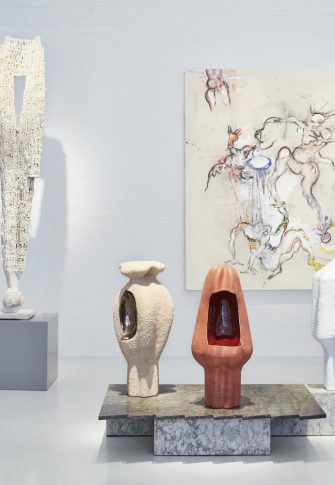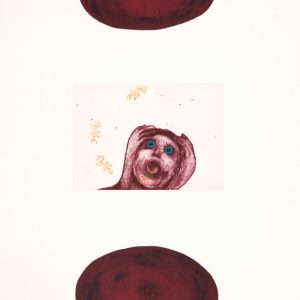Norval Foundation
23.07 - 10.10.2022
How do we remember a city’s history? Do we pay attention to the information living in the bodies of the buildings, the remnants of who and what came before? Before the countless, now dilapidated spaces were abandoned and their walls started peeling, their colours falling away. Before the pigeons moved in and the cityscape started changing again. Taking the time to give the absence meaning is to close the distance between then and now, realising how much ‘closer’ we are to our own ‘history’ to begin with. Drawn in by the abandoned clothing factory space above his studio in Salt River, Kamyar Bineshtarigh realised his three series of works for Uncover, his latest offering exhibiting at Norval Foundation, inspired by and utilising the light, decay, sound, legacy and existing marks of the storied walls.
The first time I remember seeing Bineshtarigh’s work, I was rushing past the AVA Gallery some two, three years ago, on the other side of town. The image of his inscriptions that spanned the building’s face stopped me, turned me, and guided my eyes to track his signature. I was immediately curious. The temporary mural, punctuated by vivid red wooden windows, beckoned me forward. with an impulsive ‘something’ laden within the text’s visual patterning, which articulated itself to me beyond my ignorance of either of the language’s structures. For his work, An Exhaustive Catalogue of Texts Dealing with the Orient, the artist transcribed passages from Edward Said’s Orientalism, the English translated into Arabic script. Maybe it was the novelty of my engagement with these letters, and/or something so flippant as what I would call a ‘writer-thing,’ where seeing someone’s handwriting, their linework, or mark-making, makes me feel like I can better see them. Either way, the sight prompted my interest in his work and practice, and I joined the many who sincerely appreciate both the conceptual intent and execution of Bineshtarigh’s work.
The multimedia artist, no stranger to scale, is also known for his works of ink scribed onto glass. The then shattered pieces are pinned to walls, exploring the influences of deconstruction, disconnection, and distance on meaning, heritage and history in the context of our present ideas of religion, culture and diversity. Such a shard catches my eye, pinned to the right side of Studio Wall IV, 2022, and it feels like a thread, tied not only to the artist’s previous works, but to the artist’s commitment to memory, the act of remembering, locating the present-tense of meaning through a deliberate articulation of the past.

Installation view: Kamyar Bineshtarigh, Uncover, 2022. Photograph by Michael Hall. Courtesy of Norval Foundation.
For Uncover, there were three focal points for the final presentation, culminating in as many series, respectively titled Studio Wall, Factory Wall and Pillar. Existing beyond the canvas, part and apart of the original walls were lifted and removed by Bineshtarigh after the layers of cold glue, ink, fiberglass, pencil, incense, Hessian, paint, canvas, crayon, bleach, cartridge paper were added to the story of the wide surfaces. The works curl, hang and call from the Foundation’s stark opposite. I spend time attending to as many details as I can, each significant in their role the overall image: spotting Warren Maroon’s name, photocopies, anecdotes of jealousy and small script embedded into the thickened flesh of Bineshtarigh’s materials, compounding to form Studio Wall I, 2022. The room doesn’t feel empty, even though besides the artwork, it’s just me in the space. I begin to grasp the sensation Bineshtarigh described when the abandoned clothing factory called to him at the beginning of this exhibition’s journey: a collective humming stretched across the room through the artist’s hand. Whatever was remaining, still living, now in communion with everything poured unto it.
The Factory Wall series maintains the conversation. Bineshtarigh follows those threads, befriends them and extends; enunciates and exalts them with his own, while the Pillar series adds depth to the already varying dimensions of the artist’s work here, hung to fully assume the shape of its namesake. This body of work does more than make ‘homage’ to the past, but brings it forward.









